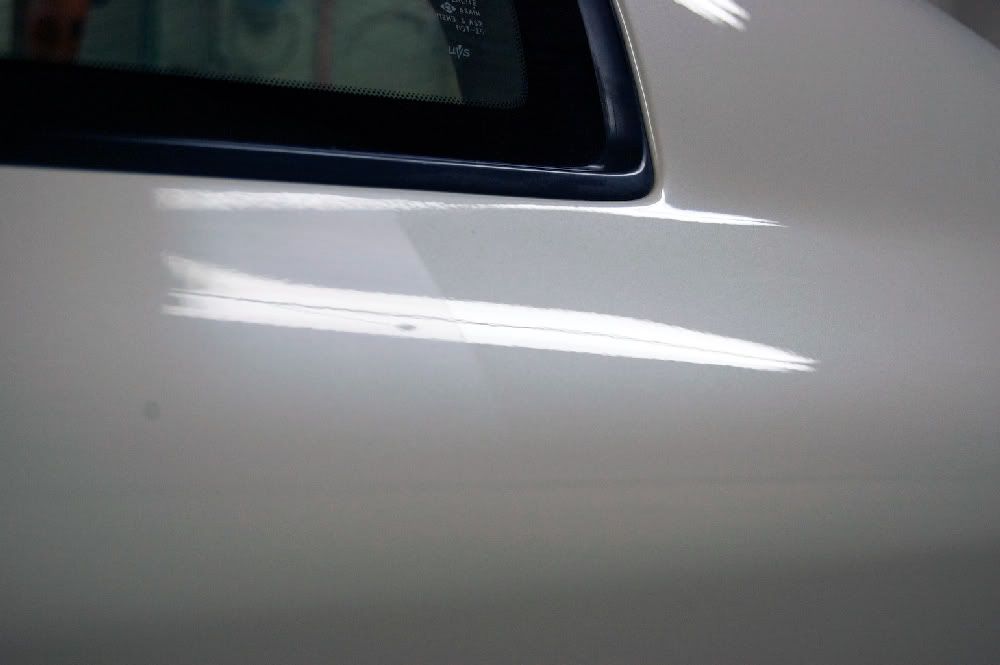Kevin Brown
New member
rydawg said:Sweet car and great job!
Thanks! I have more fun doing projects like these than just about anything.
Follow along with the video below to see how to install our site as a web app on your home screen.
Note: This feature may not be available in some browsers.
rydawg said:Sweet car and great job!

jdoria said:Kevin Brown is a good guy.
No joke.
Setec Astronomy said:Did you lighten up your pressure for the final passes?
SuperBee364 said:How to explain the actual usage... Not an easy task..
This applies to whatever pad you're using 105 with.. I used to (this is subject to change after what I've learned in this thread) start off by misting the pad with a bit of FK425. Then I would put four small pea sized dots on the pad. Now this is the part that's hard to explain, so bear with me... Normally, at this point I would outline what I call my "polish box"; I'd spread the polish around in a 2'x2' (or so) box without the buffer running, then I'd turn on the buffer at slow speed, and again spread the polish evenly through the "box". You can't do that with 105, or it'll flash over before you can even get your machine turned on. After you've applied the four dots to your pad, you "hit the ground running": turn on the buffer and start working the polish immediately. Go until you think you're about half way to the time that the polish is going to flash on you. This amount of time is extremely variable, and you'll just have to experiment with how long the working time is for the conditions of that day. I only keep going into fresh paint until I'm at the halfway time point. I also use pressure as appropriate for the amount of cutting I need. At the halfway time point, I ease off on the pressure to just a bit more than the weight of the machine, and go back over the paint I've been working on until the polish flashes. If you timed it right, you should be right back to where you started from. One or two passes with light pressure is what your shooting for to get the best finish.
At this point, a lot of guys have good luck with spritzing the surface with distilled water and working the 105 until it dries again. I never had much luck doing that.
105 really performs well when your pad is saturated with the polish. Once a pad is saturated, it takes very little 105 per application, and you'll find that you have plenty more working time. It's weird... the more saturated the pad is, the longer the working time you'll get before flash over. And that's great, because you can stop anytime you want. Just remember that the finish you get is highly dependent on the pressure you used for the last few passes, and the pad you used.
Until you get used to the working time, you'll probably find yourself in a situation where the polish has flashed, and you didn't have enough time to do the light pressure passes. No worries, just apply some fresh 105 and do your light pressure passes. Sorry to seem like I'm getting really basic here, but this is quite different than what you'd do with a traditional polish and breaking it down correctly.
Also, once a pad is saturated, you might find that adding additional polish just exacerbates the whole flashing problem and polish sticking on paint. If your pad gets to that point, don't take it off! You've hit the "sweet spot". Keep polishing using no additional polish! You can keep going until you're no longer seeing any cutting/polishing going on. At that point, spur (or brush) the heck out of the pad, apply four more dots, and start the process over again.
It's really cool when your pad gets to the saturation point. There's hardly any residue left behind, and you can immediately see (without having to look through residue) at the result you are getting. It feels pretty strange to buff out a whole section of a car without seeing any residue left behind or using any additional polish. The first time I did this, I kept thinking, "What are you doing?? You're *dry buffing* this paint! whatareyoumental?" You'll get over it fast when you see the results, though.
Hopefully this helps....
RZJZA80 said:so will this method cause premature failure of the PC? Pushing down hard like that, forcing the motor to work that much harder, has any experienced any failure?
RZJZA80 said:so will this method cause premature failure of the PC? Pushing down hard like that, forcing the motor to work that much harder, has any experienced any failure?
